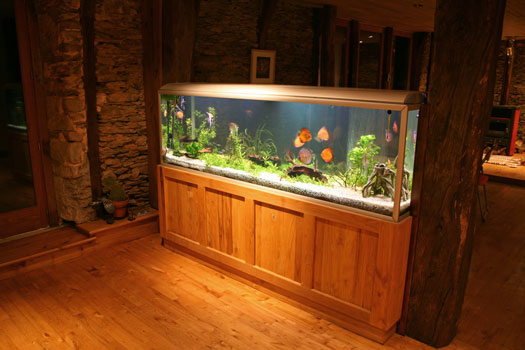- Your shopping cart is empty!
Determining the Size of Fish of Tank You Want for Your Home

When it comes to saltwater and freshwater planted aquariums, standard sizes begin at 2.5 gallons and continue all the way past 180 gallons with several size variants in between. With acrylic tanks, which tend to be pricier than their glass counterparts, you have a greater range of sizes and shapes that go far beyond the traditional rectangles. When you’re getting started in the fish keeping hobby, size matters significantly. You really should begin with at least a 10-gallon tank (did you know that a 20-gallon aquarium will hold four times more fish than a 10-gallon tank?) because smaller ones require more frequent maintenance. At the same time, larger aquariums that hold more than 40 gallons also have special considerations that new aquarists should ease into rather than tackling head on. There’s also the matter of the space where you intend to place the aquarium, and this is what you need to consider.
Choosing an Ideal and Permanent Location
The enjoyment of an aquarium is achieved through caring for a contained ecosystem. When choosing the spot where the tank will be placed, you have to make sure it will be peaceful for your fish, meaning it’s reasonably quiet and not heavily transited. Moving aquariums isn’t easy because even a 10-gallon tank will weigh more than 100 pounds when filled with water. You need easy and unencumbered access to the tank, so there should be adequate space to surround it. If the tank gets direct sunlight several hours a day, the plants, fish, and invertebrates will certainly enjoy it, but you’ll also promote algae bloom.
Minimum Tank Sizes for Certain Species
Freshwater and reef tanks intended to hold larger tropical fish will naturally need to be larger. For example, cichlids can easily grow to six inches, thus requiring a minimum of 30-40 gallons and not too many tank mates. The same can be said about silver dollars. All fish and invertebrates will be happier in larger tanks as long as they have live plants, substrate, rocks, and decorations that break up the strange monotony of open water.
Weight Considerations
How much an aquarium weighs is more important than its dimensions. Residential or commercial flooring will likely handle a 30-gallon tank filled with water, gravel, and rocks. However, a 40-gallon tank can weigh more than 450 pounds, and this could pose a problem for the surface the tank will be placed on. If you’re not sure whether your existing furniture can support an aquarium, the best solution is to purchase an aquarium stand because these stands are specifically made to hold more than the weight of the water. Visualize you and three of your friends being able to jump up and down on the furniture you’re placing a 40-gallon tank on. An aquarium stand can handle this—can your furniture?
Why Larger Is Better
The time needed to establish aquarium water and complete its nitrogen cycle is generally shorter for larger tanks. When you’re working with greater water volumes, the dilution of oxygen molecules becomes more efficient, and the same goes for toxins. Seasoned aquarists will tell you that larger tanks should be filled with plants, and this is always beneficial to the ecosystem. Finally, water changes are easier with larger tanks, and they don’t need to be as frequent.
Whether you need a high-quality aquarium or any of the necessary saltwater or freshwater aquarium supplies, reach out to Aquatic Warehouse. We’ve got everything you need to keep your tank running smoothly and your fish happy and healthy for many years to come. You can order what you need on our website, or stop by our store located in Kearny Mesa. If you have any questions for our knowledgeable and friendly staff, please call us today at 858-467-9297.
